Photographs: Alessandro Bianchi/Reuters
The resignation of Pope Benedict XVI -- the first pontiff to resign since the Middle Ages -- and the run up to the election of a new pope has once again brought the spotlight on the Vatican and the papacy.
As a group of cardinals descend to Vatican for the election and the world media trains its cameras to cover the event, Rediff.com brings you some interesting facts you may not know....
Sistine Chapel paintings
Image: A view of the magnificent Sistine ChapelPhotographs: Franco Origlia/Getty Images
The Sistine Chapel is the best known chapel in the Apostolic Palace, the official residence of the pope in the Vatican City. It is the site of the Papal conclave, the process by which a new pope is selected.
The artist Michelangelo worked from 1508 to 1512 to complete painting the frescos on the ceiling of the chapel.
...
Vatican City
Photographs: Stefano Rellandini/Reuters
A walled enclave within the city of Rome, the Vatican City is a landlocked city-state with a population of just 800 residents.
Vatican City is the smallest independent state in the world both in area and population. Citizenship in the Vatican is not guaranteed by birth, but by appointment.
...
Security at the Vatican
Photographs: Stefano Rellandini/Reuters
Swiss Guards are responsible for the safety of the pope. They serve as personal escorts to the pontiff and as watchmen for Vatican City and the pontifical villa of Castel Gandolfo.
The Swiss guards work independent of the Swiss armed forces and are employed by the Roman Catholic Church under the leadership of the pope.
...
Body that elects the pope
Image: Archbishop Philip Tartaglia leaves with other priest after he conducted his first service as administrator of the Archdiocese of Edinburgh and St Andrews at St Mary's Cathedral in Edinburgh, ScotlandPhotographs: David Moir/Reuters
The College of Cardinals convenes on the death or resignation of a pope as a papal conclave to elect a successor.
A function of the college is to advise the pope about church matters when he summons them to an ordinary consistory.
...
Saint Peter's Basilica
Image: A view of St. Peter's Basilica during a mass held by Pope Benedict XVI with newly appointed cardinals, on February 19, 2012, in Vatican CityPhotographs: Franco Origlia/Getty Images
The most renowned work of Renaissance architecture, the St Peter's Basilica is one of the largest churches in the world. While it is neither the mother church of the Roman Catholic Church nor the cathedral of the Bishop of Rome, Saint Peter's is regarded as one of the holiest Catholic sites.
...
Vatican Museums
Image: Vatican Museums -- Vatican City, RomeThe Vatican Museums inside the Vatican City are among the greatest museums in the world, since they display works from the immense collection built up by the Roman Catholic Church throughout the centuries including some of the most renowned classical sculptures and most important masterpieces of Renaissance art in the world.
...
World War II
Photographs: Reuters
During World War II, Pope Pius XII, like several of his predecessors who were popes in times of war, left a document informing the College of Cardinals that if he were taken prisoner, he was no longer to be considered the pope, so the cardinals were to hold a conclave and elect a new pontiff, stlouisreview.com reports.
...
The papal Apocalypse
Image: Pope Benedict XVI is assisted as he leads the Christmas mass in Saint Peter's Basilica at the VaticanPhotographs: Max Rossi/Reuters
Doomsday fanatics claim that a 12th century prophecy states the successor to Benedict XVI will be the last pope before the end of the world, the dailymail reports.
St Malachy, who is said to have travelled to Rome in 1139, experienced a vision of future popes, writing down a series of 112 cryptic phrases that described each one in turn.
Pope Benedict XVI, is linked to phrase No 111.
The ominous phrase No 112, reads: 'In the final persecution of the Holy Roman Church there will reign Petrus Romanus (Peter the Roman), who will feed his flock amid many tribulations; after which the seven-hilled city will be destroyed and the dreadful Judge will judge the people.'
...
Death of pope
Photographs: Getty Images
The death of the pope is verified by the Cardinal Camerlengo, or Chamberlain, who traditionally performed the task by gently striking the pope's head with a small silver hammer and calling out his Christian (not papal) name three times.
During the twentieth century the use of the hammer in this ritual has been abandoned; under Universi Dominici Gregis, the Camerlengo must merely declare the pope's death in the presence of the Master of Papal Liturgical Celebrations, and of the Cleric Prelates, Secretary and Chancellor of the Apostolic Camera.
The Apostolic Palace
Image: Nuns look towards the Apostolic Palace in Saint Peter's SquarePhotographs: Stefano Rellandini PH/YH/Reuters
The Apostolic Palace where the pope resides in Vatican City has more than 1,400 rooms, 12, 523 windows, nearly 1,000 flights of stairs and 20 court yards.
The building contains the Papal Apartments, various government offices of the Roman Catholic Church and the Holy See, private and public chapels, Vatican Museums and the Vatican library, including the Borgia Apartment, now used to house artworks.

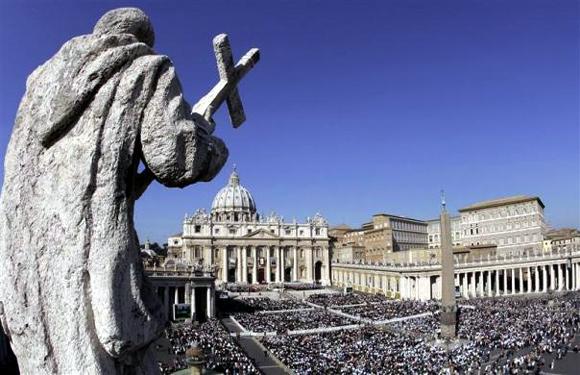
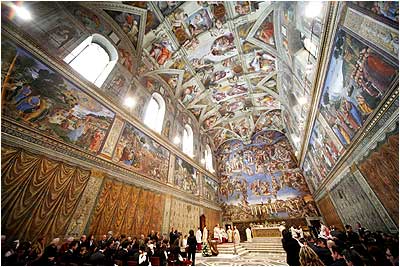
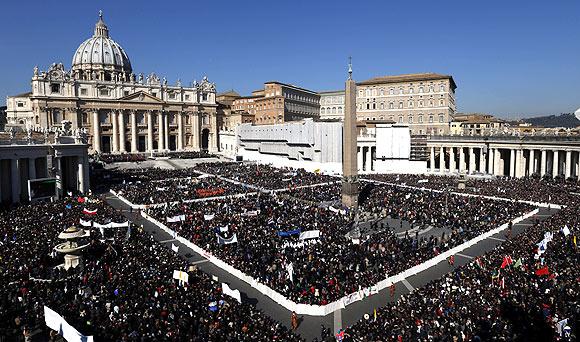
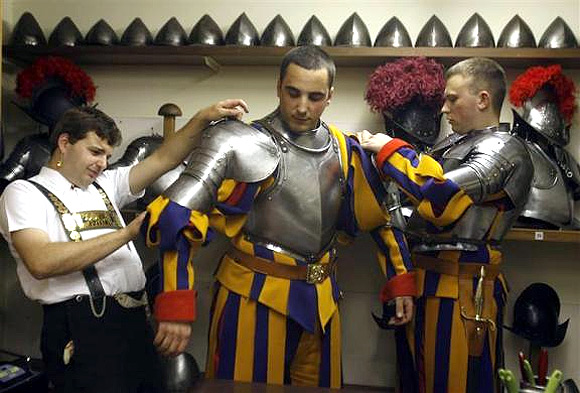
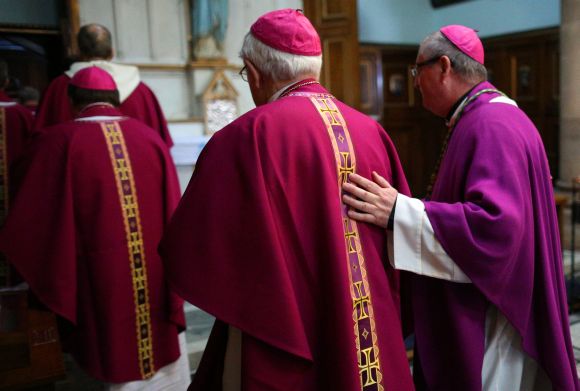

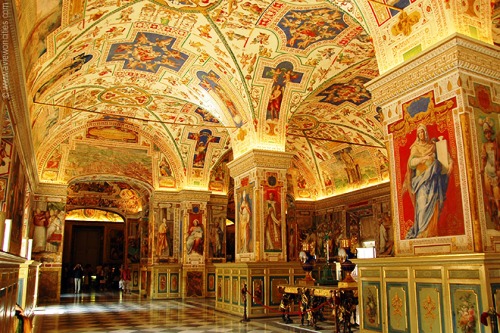
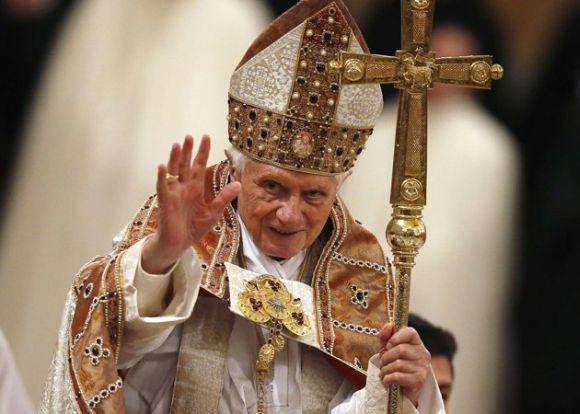
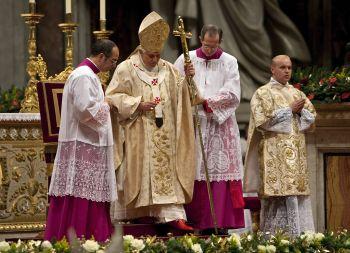

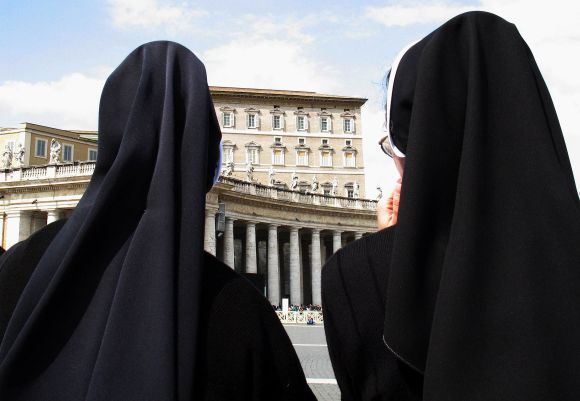
article